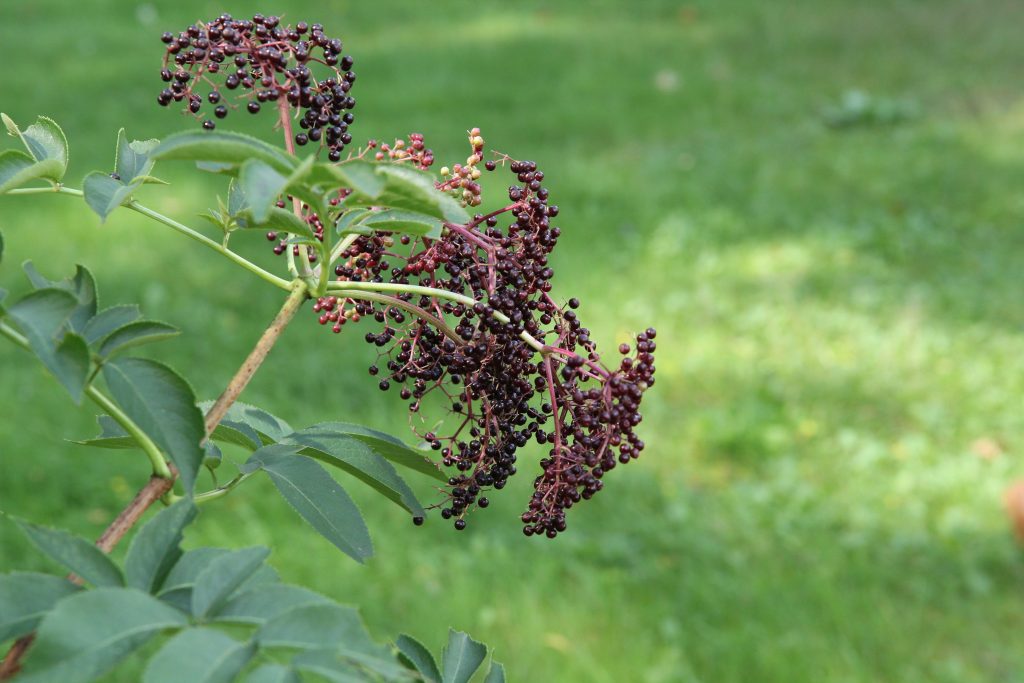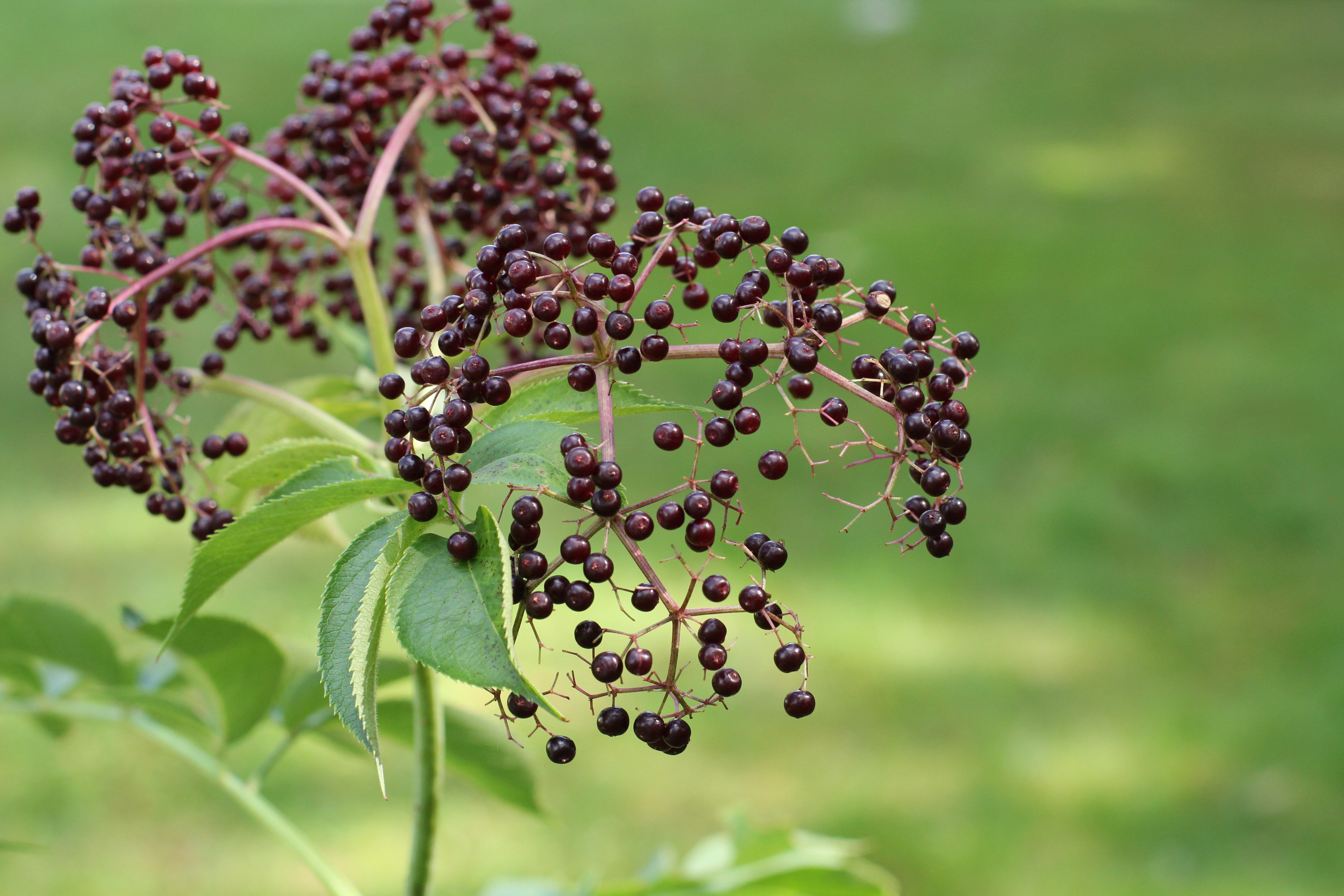Elderberry Magic



I’ve been thinking about the magic of growing a garden. You build your soil and the plants do the rest. Not that building soil is easy, but layering compost, yard waste, seaweed, and straw seems straightforward and do-able compared to, say, creating a tomato or a butternut squash. Gardening can be frustrating and difficult when weeds takeover or pests descend, but focusing your energy on creating rich soil and then mulching well gives the plants much of what they need to succeed.
That something as small as a seed, that tens or even hundreds of these dry, hard, curious kernels become plants that grow 8 feet tall; that sprawl across a garden bed, heavy with fruit; that swell into a sweet crunchy bright orange root seems truly miraculous. All we can do is provide the right environment, we can’t tell the plant what to do or how to grow.
In April, I mulched over a grassy spot in our yard, covered it with cardboard and wood chips, dug three holes and filled them with compost. In the holes, I planted elderberry seedlings. It rained so much this spring I didn’t have to water them and they sent out green shoots and leaves and eventually delicate white blossoms, galaxies of tiny white flowers clustered together. I wasn’t expecting the plants to blossom or fruit this first year. They don’t get full sun where I planted them, especially now that the sun doesn’t get high enough in the sky above the forest behind our house. But the flowers turned into tiny green berries and slowly the berries have ripened into deep, inky, purple.
Now that I know what the plants look like, I see them growing in many places along road sides. A couple of generations ago they were common plants used in many households for pies and jams. The flowers can also be eaten, used in tea, or made into cordial. Many cultures across the world and over time have revered elderberry for its healing power and multiple uses. Some believed that the spirit of the elder woman was in each plant, and it was often planted near a garden to watch over it. I’ve only begun to learn more about herbalism and medicinal plants but I am fascinated by the relationship of plants and humans. For thousands of years, pharmacies were gardens, fields, and forests, not stores filled with plastic and stale air. Modern medicine has great value, but it lacks the relationship to the land and plants and a connection to the nourishing power of what the earth has to offer.
I can’t say for sure if elderberry syrup keeps us healthier. We still get sick a few times each winter, but elderberries have many potential health benefits. I’ve been making elderberry syrup for a few years and most days during the cold months, Amos, Eowyn, and I each swallow a spoonful. Harvesting elderberries that grew on our little homestead makes this year’s batch of syrup extra special.
Elderberry Syrup
Elderberry stems and leaves can be poisonous if consumed and the berries should be dried or cooked before you consume them. I’ve most often used dried berries for syrup, if you are using fresh berries (as I did this year) you may need more for your syrup.
1 cup elderberries
4 cups water
2 cinnamon sticks
2 teaspoons whole cloves
1-inch piece of fresh ginger, sliced
1 cup raw honey
Combine elderberries, water, cinnamon, cloves and ginger in a non-reactive saucepan. Bring to a simmer and cook for 20-30 minutes until the syrup has reduced by about hald. Remove from heat and set aside until it is warm but not hot. Pour through a find mesh strainer into a jar, squeezing as much liquid as possible out of the berries. Add the honey and stir to combine. Store in an airtight jar or bottle in the refrigerator.
Comments are closed.

Julie
October 3, 2019 at 7:21 amJust be sure you don’t confuse elderberry with pokeweed. The berries look similar, but pokeweed will kill you!
anna
October 7, 2019 at 8:54 pmLuckily I planted them myself so I can be sure they are elderberries, but the leaves, stems, and raw, uncooked elderberries are also not safe to eat.